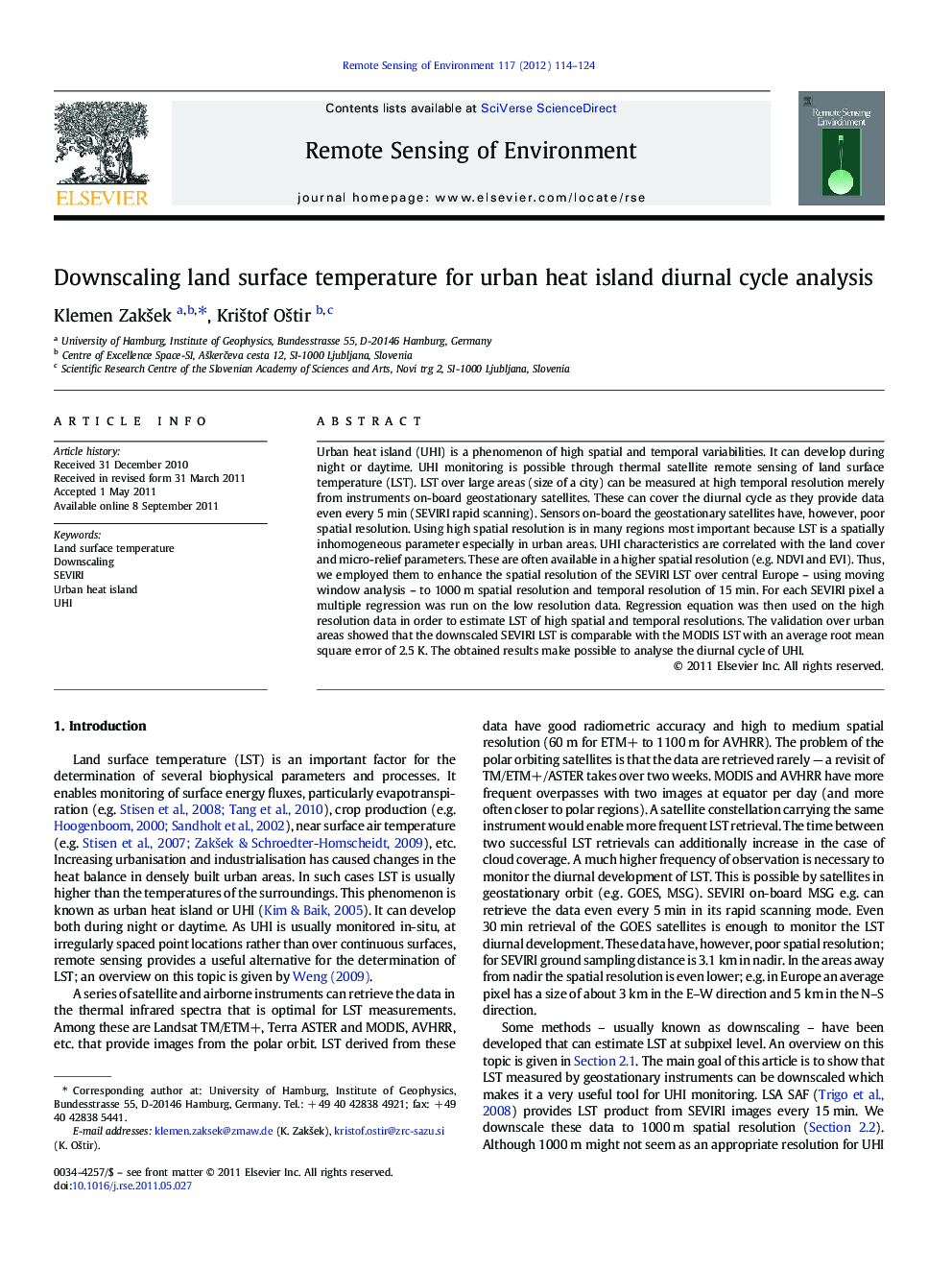| کد مقاله | کد نشریه | سال انتشار | مقاله انگلیسی | نسخه تمام متن |
|---|---|---|---|---|
| 4459257 | 1621283 | 2012 | 11 صفحه PDF | دانلود رایگان |

Urban heat island (UHI) is a phenomenon of high spatial and temporal variabilities. It can develop during night or daytime. UHI monitoring is possible through thermal satellite remote sensing of land surface temperature (LST). LST over large areas (size of a city) can be measured at high temporal resolution merely from instruments on-board geostationary satellites. These can cover the diurnal cycle as they provide data even every 5 min (SEVIRI rapid scanning). Sensors on-board the geostationary satellites have, however, poor spatial resolution. Using high spatial resolution is in many regions most important because LST is a spatially inhomogeneous parameter especially in urban areas. UHI characteristics are correlated with the land cover and micro-relief parameters. These are often available in a higher spatial resolution (e.g. NDVI and EVI). Thus, we employed them to enhance the spatial resolution of the SEVIRI LST over central Europe – using moving window analysis – to 1000 m spatial resolution and temporal resolution of 15 min. For each SEVIRI pixel a multiple regression was run on the low resolution data. Regression equation was then used on the high resolution data in order to estimate LST of high spatial and temporal resolutions. The validation over urban areas showed that the downscaled SEVIRI LST is comparable with the MODIS LST with an average root mean square error of 2.5 K. The obtained results make possible to analyse the diurnal cycle of UHI.
► We downscale SEVIRI LST over urban areas.
► LST downscaling is based on principal components of various data.
► The results have 1000 m spatial and 15 min temporal resolutions.
► The validation with MODIS resulted into R2 of 0.97 and RMSE of 2.5 K.
Journal: Remote Sensing of Environment - Volume 117, 15 February 2012, Pages 114–124